Lana is approaching the arrival of her fourth child, with only eight weeks left until her due date. She is a participant in Queensland’s Birthing in Community Program, a comprehensive initiative that offers holistic support to Aboriginal and Torres Strait Islander expectant mothers and their families. Lana expressed her desire to align her pregnancy journey with her family’s values and her children’s community, emphasizing the program’s strong emphasis on culture, women, and community connection.
The National Closing the Gap Agreement includes a target to ensure that First Nations babies are born at a healthy weight. Lana, who is non-Indigenous, and her Aboriginal partner were conscious of the challenges faced by First Nations babies during pregnancy. Recent data indicates that Indigenous babies in remote and socio-economically disadvantaged areas are more likely to have lower birth weights. Babies born below or above the healthy weight range of 2.5kg to 4.5kg are at a higher risk of health issues, developmental delays, and long-term health concerns.
Access to culturally safe services plays a crucial role in helping families address risk factors associated with unhealthy birth weights. Lana highlighted the importance of establishing relationships with specific services to ensure mothers receive essential information without any gaps in their education. The latest update from the Productivity Commission moved the healthy birth-weight target for First Nations babies into the “on track” category, aiming for 91% of these babies to be born at a healthy weight by 2031.
Dr. Yvette Roe, a professor of Indigenous Health at Charles Darwin University’s Molly Wardaguga Research Centre, emphasized the significance of achieving healthy birth weights as a positive indicator of effective systems in place. The progress of Closing the Gap in promoting healthy birth weights for First Nations babies is a step in the right direction towards improving outcomes for Indigenous communities.
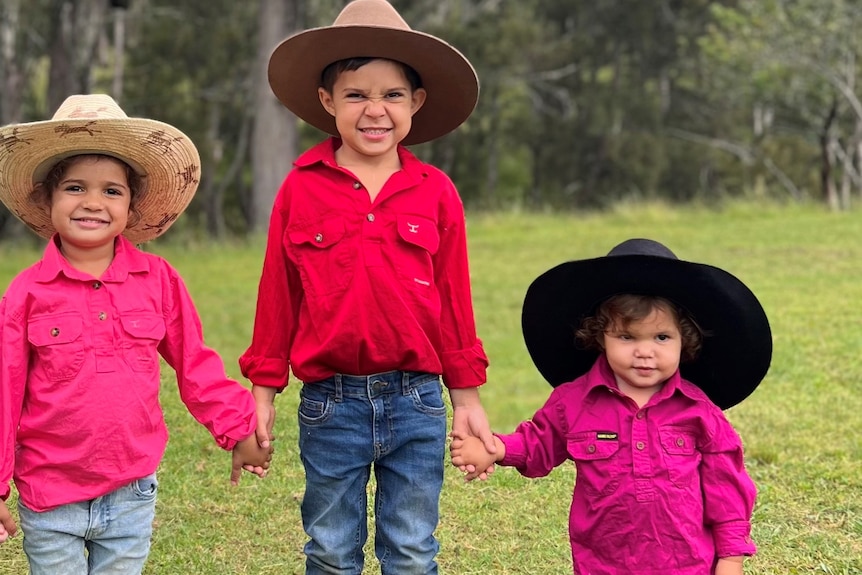
Improving Health Outcomes for First Nations Families
Lana’s children eagerly anticipate the arrival of their newest sibling as part of a program led by Dr. Roe, fostering collaboration between Aboriginal community-controlled organizations and mainstream tertiary hospitals.
According to Dr. Roe, initiatives like the one Lana participates in yield significant benefits for First Nations families. These include a decrease in preterm births, lower chances of babies being born underweight or prematurely, higher rates of breastfeeding initiation, increased utilization of antenatal care, and a reduction in birth interventions.
Dr. Roe emphasizes the importance of a healthy start in life, highlighting the long-lasting positive effects on overall well-being. As stated by the Njikena Jawuru woman, “Ensuring a baby’s health and the mother’s well-being at birth sets the foundation for the child’s future.”
She stresses that the birth of a healthy baby at the correct time and weight, supported by various mechanisms, is crucial not only for the immediate generation but also for future ones.
Closing the Gap progress remains at the core of these efforts to enhance the health outcomes of Indigenous families, promoting a healthier start for generations to come.
Understanding the Objective of Closing the Gap Progress
The concept of Closing the Gap is a fundamental aspect of governmental policies aimed at diminishing the disparities between First Nations individuals and the general population concerning essential factors for a fulfilling and healthy lifestyle.
Monitoring various aspects such as education, health, security, employment, housing, and life expectancy of both Indigenous and non-Indigenous Australians, experts at the Productivity Commission identify discrepancies between these two cultural groups as gaps.
Initially introduced in 2008 following advocacy from Indigenous health organizations, the first Closing the Gap policy garnered support from state, territory, and federal governments.
Originally comprising six targets, the policy was later expanded in 2016 to encompass school attendance as a key focus area.
In response to consecutive years of stagnant progress and, in some instances, worsening disparities, there was a call to revamp the policy framework with a fresh agreement.
By 2020, the targets were significantly broadened to include 19 national socio-economic objectives spanning 17 socio-economic domains. The goal is to achieve these targets within the next seven years to ensure equitable opportunities for First Nations people compared to their non-Indigenous counterparts.
The new agreement emphasizes enhancing the participation of First Nations communities in co-creating solutions. It mandates collaboration among all government levels and Indigenous organizations collectively known as the Coalition of Peaks.
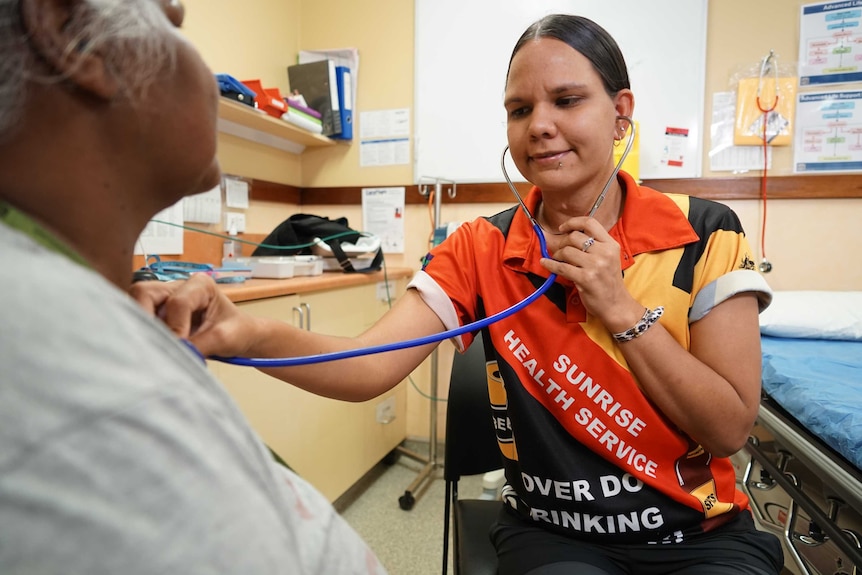
Desleigh Shields works as a healthcare provider at an Aboriginal Community Controlled Health Organisation (ACCHO) in the Northern Territory, contributing to Closing the Gap progress.
Tracking the Progress of Closing the Gap: A Look at the Targets
Closing the Gap Progress in Physical and Mental Health
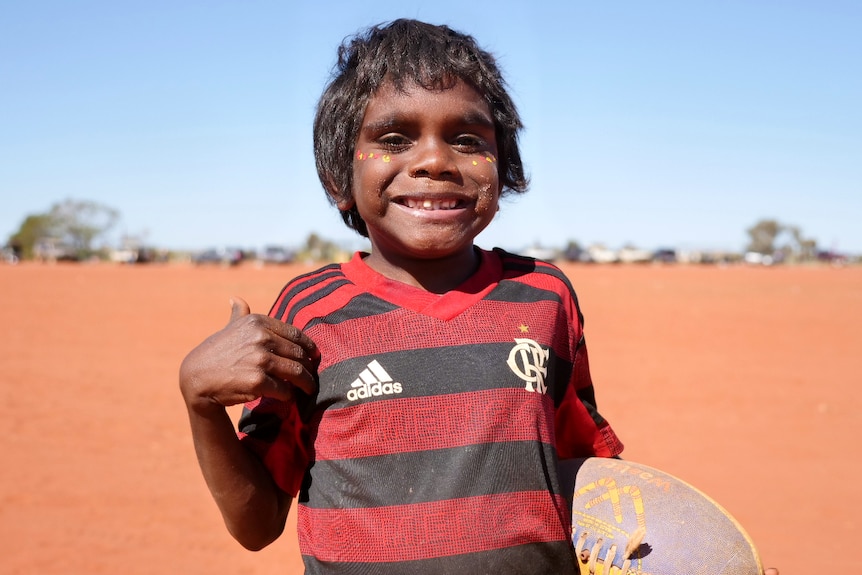
### Closing the Gap Progress at the Martu Youth Festival
At the Martu Youth Festival, children engage in a friendly game of football while their parents participate in various sports activities. The scene captures the essence of community and togetherness. The event, captured by ABC News photographer Jesmine Cheong, exemplifies the spirit of unity and health promotion among Indigenous communities.
#### Closing the Gap Progress: A Vital Initiative for Indigenous Health
The Closing the Gap initiative aims to bridge disparities in life expectancy and health outcomes within a generation, with a target set for completion by 2031. However, recent data suggests that progress has been made, but the initiative is not entirely on track. Currently, Aboriginal and Torres Strait Islander individuals are projected to have a life expectancy eight years shorter than their non-Indigenous counterparts by 2020-2022.
#### Striving for Improvement: Healthy Birth Weights for Indigenous Babies
Another crucial aspect of the Closing the Gap initiative is to increase the percentage of babies born at a healthy weight. Encouragingly, this goal shows positive progress and is on track. In 2021, nearly 90% of First Nations babies were born with a healthy birth weight, reflecting a positive trend in maternal and infant health outcomes.
#### Addressing Mental Health: Reducing Suicide Rates among Indigenous Communities
One of the significant targets of the Closing the Gap initiative is to achieve a substantial and sustained reduction in suicide rates among Aboriginal and Torres Strait Islander populations. Unfortunately, recent data indicates a worsening trend, with suicide emerging as the primary cause of death for First Nations individuals aged 15 to 44 years in 2022. This alarming statistic underscores the urgent need for targeted interventions and support systems to address mental health challenges within Indigenous communities.
Closing the Gap Progress for Families, Housing, and Children
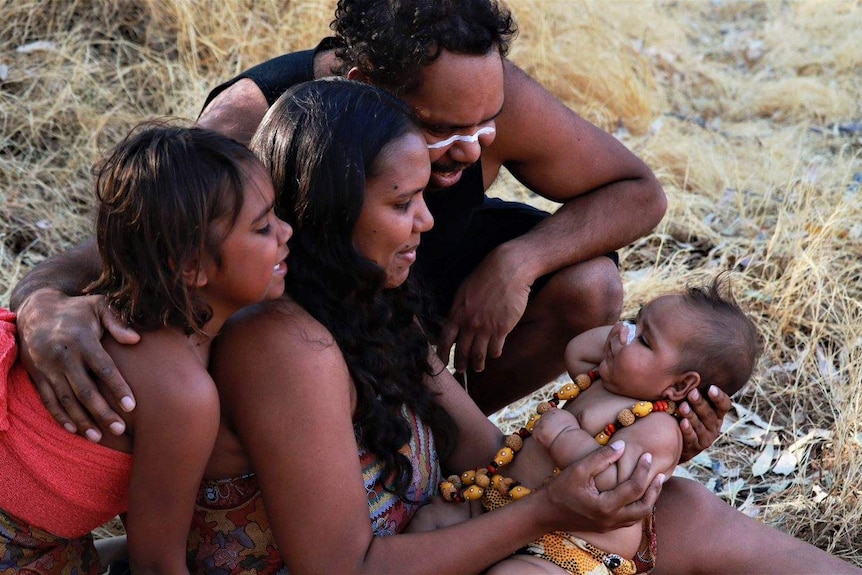
Closing the Gap Progress: Challenges Faced by Alice Springs Family
Ruby Hart, Albert Bailey, and their children in Alice Springs are emblematic of the struggles faced by many Aboriginal and Torres Strait Islander families. The over-representation of Indigenous children in out-of-home care remains a pressing issue, with Aboriginal and Torres Strait Islander children being 10.5 times more likely to be placed in such care compared to non-Indigenous children.
As of June 2022, the number of Indigenous children in out-of-home care reached a record high of 22,328, marking an increase of 85 children from the previous year. This alarming trend highlights the urgent need for targeted interventions to address the root causes of this disparity.
Challenges in Achieving Targets
Despite efforts to address key targets, such as reducing the rate of over-representation of Aboriginal and Torres Strait Islander children in out-of-home care by 45 per cent, the progress has been disheartening. The latest Family Matters annual report indicates that the current initiatives are falling short of the desired outcomes.
Moreover, targets like increasing the proportion of Aboriginal and Torres Strait Islander people living in appropriately sized housing to 88 per cent face significant challenges. The lack of available data to assess the status of essential services for communities further complicates the evaluation of progress towards this goal.
Another critical target, aimed at reducing the rate of family violence and abuse against Aboriginal and Torres Strait Islander women and children by at least half, has seen no recent updates. The absence of new data since the 2019 National Aboriginal and Torres Strait Islander Health Survey underscores the need for enhanced data collection and reporting mechanisms to track progress effectively.
Closing the Gap Progress in Incarceration Rates

Closing the Gap Progress: Addressing Overrepresentation in the Justice System
First Nations individuals constitute one-third of the adult prison population, as reported by the Institute of Health and Welfare in 2021. The data highlights a concerning trend that requires urgent attention to reduce this disproportionate representation.
Efforts to Reduce Incarceration Rates
Target 10 aims to decrease the incarceration rate of Aboriginal and Torres Strait Islander adults by a minimum of 15%. Unfortunately, the current status indicates a worsening situation, with progress falling short of the target.
Challenges Faced by Young Indigenous People
In 2021, First Nations people accounted for 60% of young individuals aged 10-17 in detention on an average night in the June quarter, according to the AIHW. This data underscores the need for targeted interventions to address the overrepresentation of Indigenous youth in the justice system.
Addressing the Growing Disparity
Since the September quarter of 2020, the number of First Nations young people in detention has been on the rise, while the count of non-Indigenous youth in detention has been declining. This disparity emphasizes the importance of implementing effective strategies to support and empower Indigenous youth and prevent their involvement in the justice system.
In conclusion, the data on incarceration rates among First Nations individuals underscores the critical need to address systemic issues and implement targeted interventions to reduce overrepresentation in the justice system. Closing the Gap progress requires collaborative efforts and a commitment to creating a more equitable and just society for all Australians.
Progress in Closing the Gap Between Education and Employment
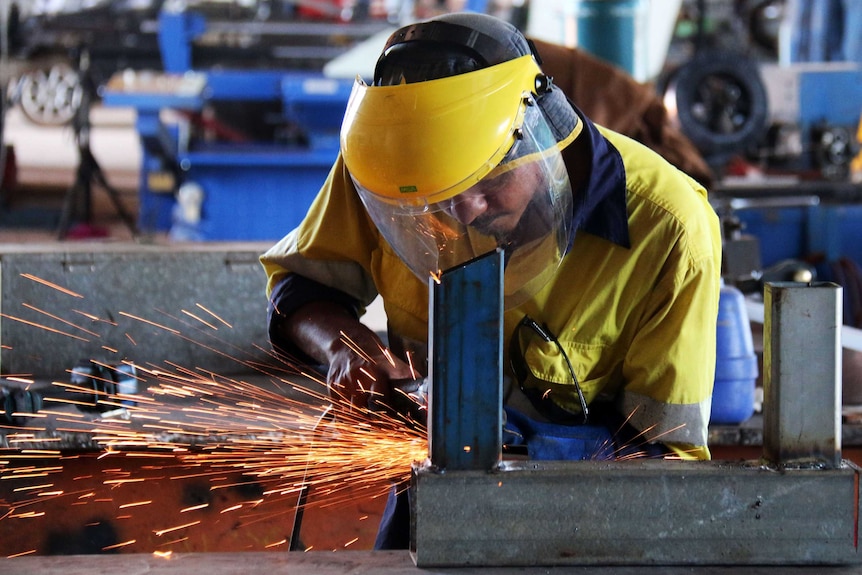
At Crowhurst Engineering in Katherine, Aaron Miller participates in the CDP program. The progress of Closing the Gap initiatives is as follows:
### Closing the Gap Progress
Target 6 aims to increase the population of Aboriginal and Torres Strait Islander individuals aged 25-34 who have completed non-school qualifications of Certificate III or above. While there has been improvement, the initiative is not currently on track.
Target 17 focuses on enhancing access to the internet in the homes of Aboriginal and Torres Strait Islander individuals over 15 years old. Unfortunately, there is no comparable data available for this target.
Targets 3, 5, 7, and 8 have seen varying degrees of progress. Target 3, which aims to increase the number of four-year-olds enrolled in a preschool program, is showing improvement and is on track. Target 5, which aims to increase the percentage of individuals aged 20-24 with a year 12 or equivalent qualification, has seen improvement but is not on track. Target 7, aiming to increase the percentage of individuals aged 15-24 fully engaged in employment, education, or training, has shown improvement but is also not on track. Target 8, which aims to increase the employment rate of individuals aged 25-64 to 62 percent, is showing improvement and is on track.
Languages and Land Rights Impact on Closing the Gap Progress
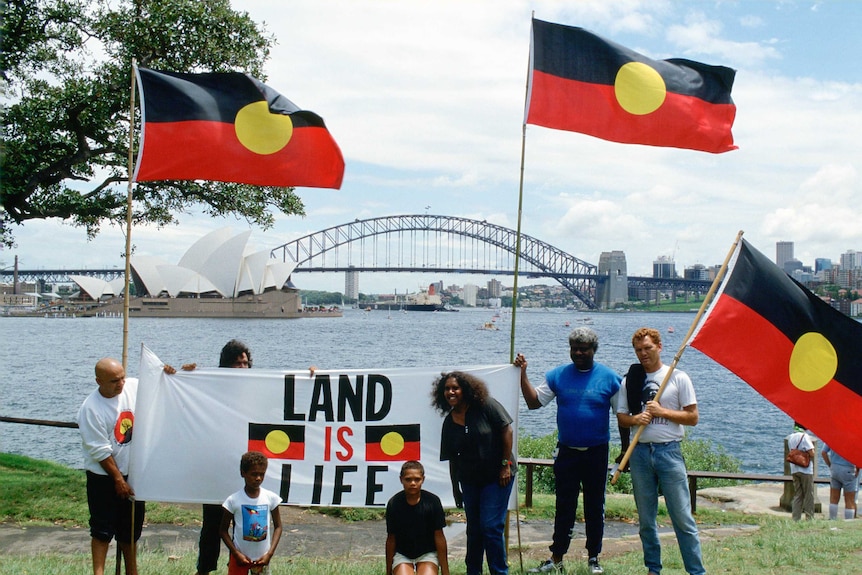
Closing the Gap Progress in Aboriginal Land Rights Protest
In Sydney on January 28, 1988, an Aboriginal Land Rights protest took place during Bicentennial Day. The protest aimed to increase the percentage of land mass and sea area covered by Indigenous people’s legal rights or interests, aligning with Target 15A and B. This initiative shows improvement and remains on track.
Additionally, Target 16 focuses on sustaining the increase in the number of Indigenous languages being spoken. While there is no new data available, it is noteworthy that in 2018-19, 123 Aboriginal and Torres Strait Islander languages were actively spoken.
Why is the progress of ‘Closing the Gap’ stalling?
Last month, the Productivity Commission delivered a scathing evaluation of governments’ efforts in implementing the National Agreement on Closing the Gap.
During its initial review of the agreement, it highlighted that governments have not fully honored their commitments and have persisted with conventional approaches.
The report emphasized that authorities have not fully comprehended the necessary extent of change, risking the agreement’s failure.
The commissioners stressed the need for substantial changes to alter the current course, such as enhancing collaborative decision-making, acknowledging and supporting Indigenous data control, reevaluating mainstream government structures and practices, and enforcing stricter accountability measures.
One of the identified issues was the absence of appropriate repercussions for governments failing to meet their obligations.
Ms. Burney recognized that the traditional approach of assuming government superiority has proven ineffective.
According to the ABC’s Indigenous Affairs Team, there is a lack of transparency regarding expenditure and beneficiaries, with most governments either not disclosing their financial reviews or neglecting them entirely.
Contrary to the aim of promoting self-governance, the commission discovered that funding was disproportionately allocated to non-governmental organizations and government service providers over Aboriginal Community Controlled Organizations.

Improving Health Outcomes for Aboriginal Clients in East Arnhem Land
Aboriginal clients are actively receiving their vaccinations at a health center located in east Arnhem Land, as reported by Miwatj Health Aboriginal Corporation.
Dr. Yvette Roe emphasized that the responsibility for addressing industrial deafness does not lie with the Aboriginal community sector. She highlighted the crucial role of politicians and bureaucracies in implementing policies and programs that uplift communities.
To bring about significant improvements in life outcomes, including ensuring healthy baby birth weights, Dr. Roe stressed the necessity for a genuine redesign of existing systems. She underlined the importance of interventions during pregnancy and the first thousand days of a child’s life in creating intergenerational change.
This underscores the significance of initiatives like Closing the Gap progress in bridging disparities and enhancing the well-being of Indigenous communities.
Closing the Gap Progress: Related Stories
The Commission’s initial assessment uncovers ‘superficial’ shortcomings in Closing the Gap advancements
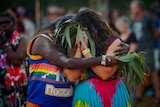
Closing the Gap progress: Alarming Increase in Indigenous Australian Suicide Rates

Closing the Gap Progress: Daniel injures himself, bleeding profusely, yet seeking medical help remains unfeasible

To delve deeper into the topic, explore:
Australia, Indigenous (Aboriginal and Torres Strait Islander), and Indigenous Policy. These are all related to the progress of Closing the Gap.


